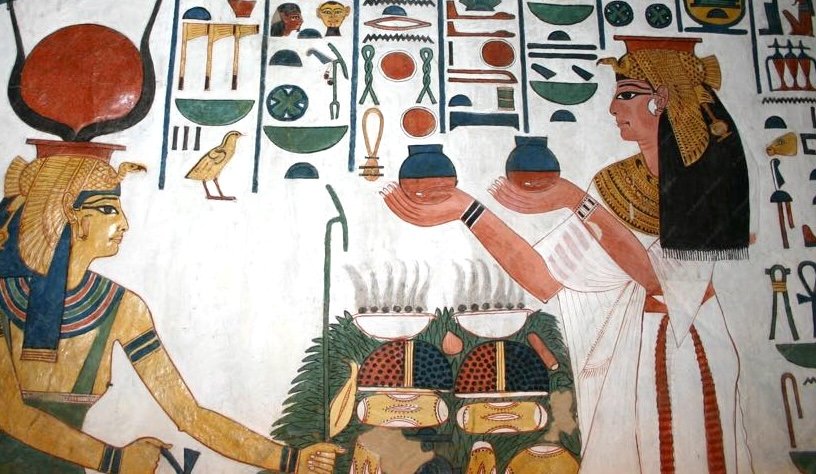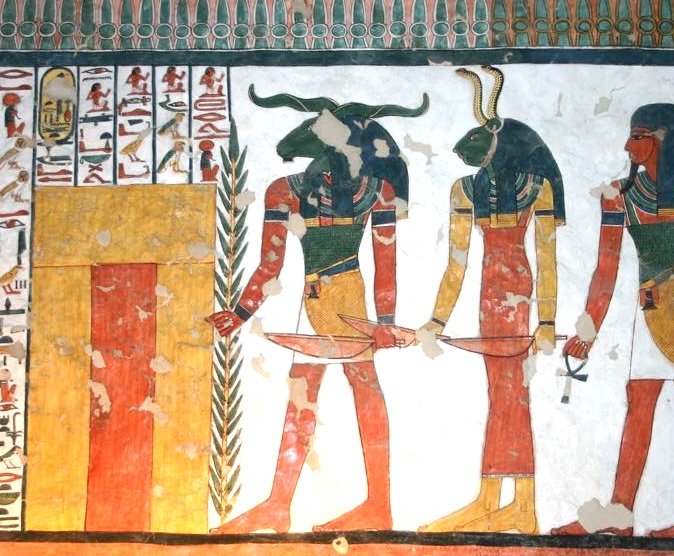A Guide to the Valley of the Kings.
On the west bank of the Nile, close to Luxor, Egypt, is the Valley of the Kings, a place with a lot of historical and scientific importance. From the Sixteenth to the Eleventh centuries BCE, this ancient burial site served as the main necropolis for the New Kingdom pharaohs. Nile Cruisen offers an opportunity to examine this famous site’s fascinating history, amazing tombs, visitor experiences, and current conservation initiatives. Historical Importance
Many of the most influential kings of Ancient Egypt found their final resting place in the Valley of the Kings. It developed into a hallowed burial site during the reign of Pharaoh Thutmose I, which served as a route to the afterlife and a defense against tomb robbers. The beliefs, culture, and political influence of the era are reflected in the inventive architecture and artistic expression of these tombs. Furthermore, the valley illustrates the development of Egyptian funerary customs by marking a departure from the previous custom of interment inside pyramids.
Beyond its royal ties, the Valley of the Kings is significant because it provides insight into Ancient Egypt’s religious and cultural customs. The intricate burial practices, which included grave goods and lengthy inscriptions, demonstrate the ancient Egyptians’ strong belief in the afterlife and their wish to ensure their rulers’ eternal life.

Overview of Geography.
About 500 kilometers south of Cairo, close to Luxor, is where you’ll find the Valley of the Kings. The East Valley and the West Valley are the two main parts of the valley, which is tucked away between the hills of the Eastern and Western Deserts. The majority of the Pharaohs’ tombs are located in the East Valley, with a smaller number of equally significant sites found in the West Valley. Potential thieves and intruders were naturally deterred by the valley’s distinctive topography, which was marked by steep cliffs and narrow canyons.
Since the early 19th century, archaeological excavations have been made easier by the valley’s geographic isolation, which has also helped to preserve its treasures. The region’s arid climate has also been essential in preserving the tombs’ and their contents’ integrity by shielding them from moisture and deterioration.
Archaeological Findings.
Archaeologists have discovered a multitude of artifacts, tombs, and inscriptions in the Valley of the Kings as a result of multiple excavations. British archaeologist Howard Carter found the tomb of Tutankhamen (KV62) in 1922. It is one of the most famous discoveries. The golden funerary mask and other ceremonial objects were among the treasures discovered in this tomb that enthralled people worldwide and reignited interest in ancient Egyptian culture.
Apart from Tutankhamen’s tomb, other noteworthy finds include the tomb of Seti I, which is renowned for its exquisite and detailed reliefs, and the tomb of Ramses VI, which has elaborate wall paintings that depict the Book of the Dead. In addition to providing priceless insights into the artistic and religious beliefs of Ancient Egypt, each tomb tells a distinct tale about the person it held. The Valley of the Kings’ Tombs.

An outline of the tombs.
The size, intricacy, and ornamentation of the more than 62 known tombs in the Valley of the Kings vary. The tombs, which frequently had several chambers, complex hieroglyphs, and ornate burial goods, were purposefully constructed to reflect the prestige and legacy of their occupants. The tombs are numbered in chronological order, starting with Pharaoh Ramses I’s tomb (KV1) and ending with Tutankhamen’s most well-known tomb (KV62).
The skill of ancient Egyptian artisans is demonstrated by the architectural style of these tombs. Long descending corridors and an antechamber leading to the burial chamber, which held the sarcophagus, are common features of tombs. The walls are covered in bright paintings and inscriptions that show images from mythology and the afterlife to guide the dead on their journey to the next life.
Famous Tombs and Who Owns Them The tombs of Hatshepsut (KV20), Ramses II (KV7), and Tutankhamen (KV62) are among the most important. In addition to its treasures, Tutankhamen’s tomb is well-known for being largely undamaged, providing a wealth of information about funeral customs. Ramses II, popularly called Ramses the Great, is renowned for his massive construction projects and military victories, and his tomb is a fitting testament to his stature. One of the rare female pharaohs, Hatshepsut, exemplifies the special place that women held in ancient Egyptian culture.
Every tomb reflects the unique character and accomplishments of its occupant through its unique features and artistic style. Our knowledge of Ancient Egypt, its politics, and its intricate social structure has greatly benefited from the abundance of information discovered in these tombs.
King’s Valley Tombs: Art and Inscriptions.
Understanding the beliefs and customs of ancient Egyptians depends heavily on the artwork and inscriptions discovered inside the tombs of the Valley of the Kings. The vibrant wall paintings serve both decorative and ceremonial functions, frequently portraying scenes from everyday life, religious rites, and cosmic elements. It was thought that these pieces of art would give the departed the food and protection they would need in the afterlife.
The tombs’ hieroglyphic inscriptions, which describe the pharaohs’ achievements and invoke the names of gods for protection, are also extremely important. Excerpts from the Book of the Dead, a compilation of spells and prayers meant to help the departed navigate the afterlife, are frequently included in the inscriptions. This combination of text and art offers a more profound spiritual meaning and aids historians in understanding Ancient Egyptian cultural narratives.
How Can I Travel to the Valley of the Kings?
The Valley of the Kings is easy to reach, and Luxor is the main entry point for tourists. The city center of Luxor is about 30 minutes away from the valley, and there are a number of ways to get there, such as taxis, guided tours, and rental cars.
To improve their overall experience, many tourists choose to take guided tours that include stops at the Temple of Hatshepsut and the Colossi of Memnon while on a Nile Cruise.
Luxor International Airport is the closest major airport for international travelers, with flights from Cairo and other major cities. After arriving in Luxor, visitors can quickly make travel arrangements to the Valley of the Kings and other neighboring archaeological sites. The Valley of the Kings is on the list of places to see on the Nile Cruise.

Tips and Rules for Visitors.
1. It’s important to follow the rules because, within the valley, photography is permitted in certain tombs but prohibited in others. In order to protect the site for future generations, visitors should also be considerate of their noise levels and avoid touching the historic walls and artifacts.
2. A day excursion to the Valley of the Kings can be filled with exploration and discovery. Three to four tombs, including those of Tutankhamen, Ramses III, and Seti I, are included in the suggested itinerary. Each tomb provides a different perspective on the burial customs of ancient Egypt. Visitors may wish to explore the nearby Temple of Hatshepsut, which is well-known for its magnificent architecture and historical significance, after touring the tombs. A two-day itinerary can include extra locations like the Mortuary Temple of Ramses III and the Valley of the Queens for those with more time. During this prolonged stay, visitors can enjoy the stunning desert scenery that envelops the valley while immersing themselves in the rich history and culture of Ancient Egypt.
Challenges in Conservation Efforts: The Valley of the Kings is in front of you.
Furthermore, the need for efficient conservation measures is exacerbated by the frequent looting and vandalism of archaeological sites. Finding a balance between accessibility and preservation is still a major concern for both authorities and conservators as the demand for cultural tourism grows.
Present-Day Conservation Initiatives.
The Valley of the Kings has seen the implementation of numerous conservation projects and initiatives in response to these difficulties. These initiatives center on keeping an eye on and maintaining the tombs, including evaluating their state using cutting-edge technologies. To lessen the effects of environmental factors and tourism, researchers are creating protective barriers and climate control systems.
Programs that educate people about the value of conservation are also essential. Sustainable tourism practices are promoted for both locals and tourists, creating a sense of shared responsibility for protecting this priceless historical site. The efforts to protect the Valley of the Kings for future generations are further strengthened by international partnerships with academic institutions, museums, and conservation groups.
In conclusion
Considering the Legacy of the Valley: The Valley of the Kings shows how great ancient Egyptian culture was and how it still affects us now. The elaborate tombs, breathtaking artwork, and extensive historical background offer priceless insights into a culture that has captivated people for ages. The valley continues to be a crucial source of information about the pharaohs’ beliefs and way of life, even as new findings are made by ongoing archaeological research.
A special chance to travel back in time and engage with the remarkable history of Ancient Egypt is provided by the Valley of the Kings, which is highly recommended for exploration. In addition to interacting with the tangible artifacts of a past era, visitors to this UNESCO World Heritage Site are also helping to preserve its legacy. We can guarantee that this amazing location will continue to evoke wonder and awe for many generations to come by promoting responsible tourism and an understanding of the Valley of the Kings’ cultural significance.
Commonly Asked Questions About The Tour in the Valley of Kings.
When is the ideal time of year to go to the Valley of the Kings?
The best time to visit the Valley of the Kings is between October and April, when the weather is cooler and more comfortable for exploring.
What number of tombs are in the Valley of the Kings?
The Valley of the Kings is home to more than 62 known tombs, each of which has distinctive characteristics and historical significance.
Are you allowed to take pictures within the Valley of the Kings tombs?
Some tombs allow photography, while others have restrictions. Every site has signs and regulations that visitors should abide by.
Can I go on a guided tour of the Valley of the Kings?
Indeed, there are a number of guided tours that offer information about the background and importance of the Valley of the Kings and its tombs.
What is being done to keep the Valley of the Kings safe?
Climate control systems, tomb condition monitoring, and educational initiatives to encourage eco-friendly travel are all part of conservation efforts.
Trusted Partners
Nile Cruisen: Chosen by Leading Brands as Egypt's Top Cruise Operator











